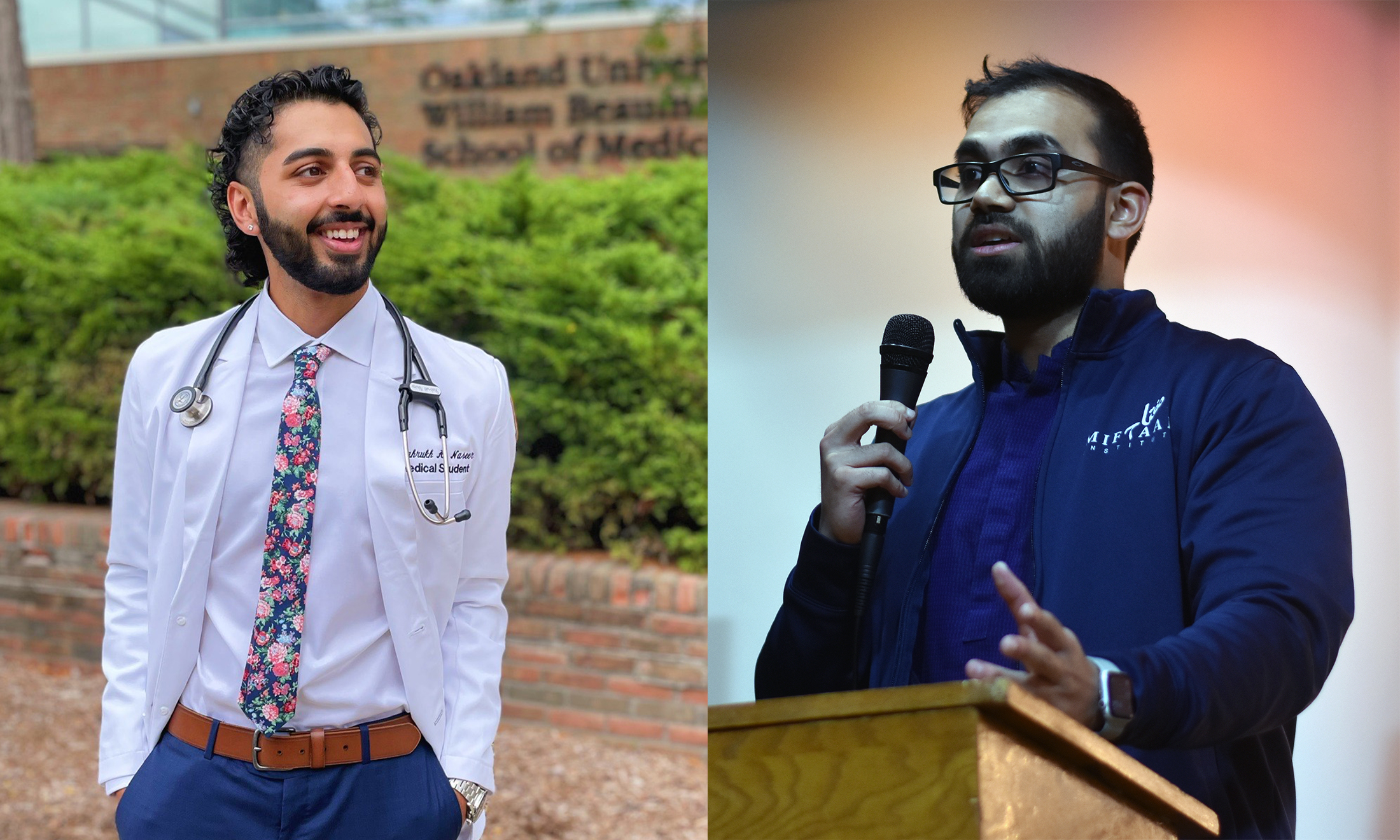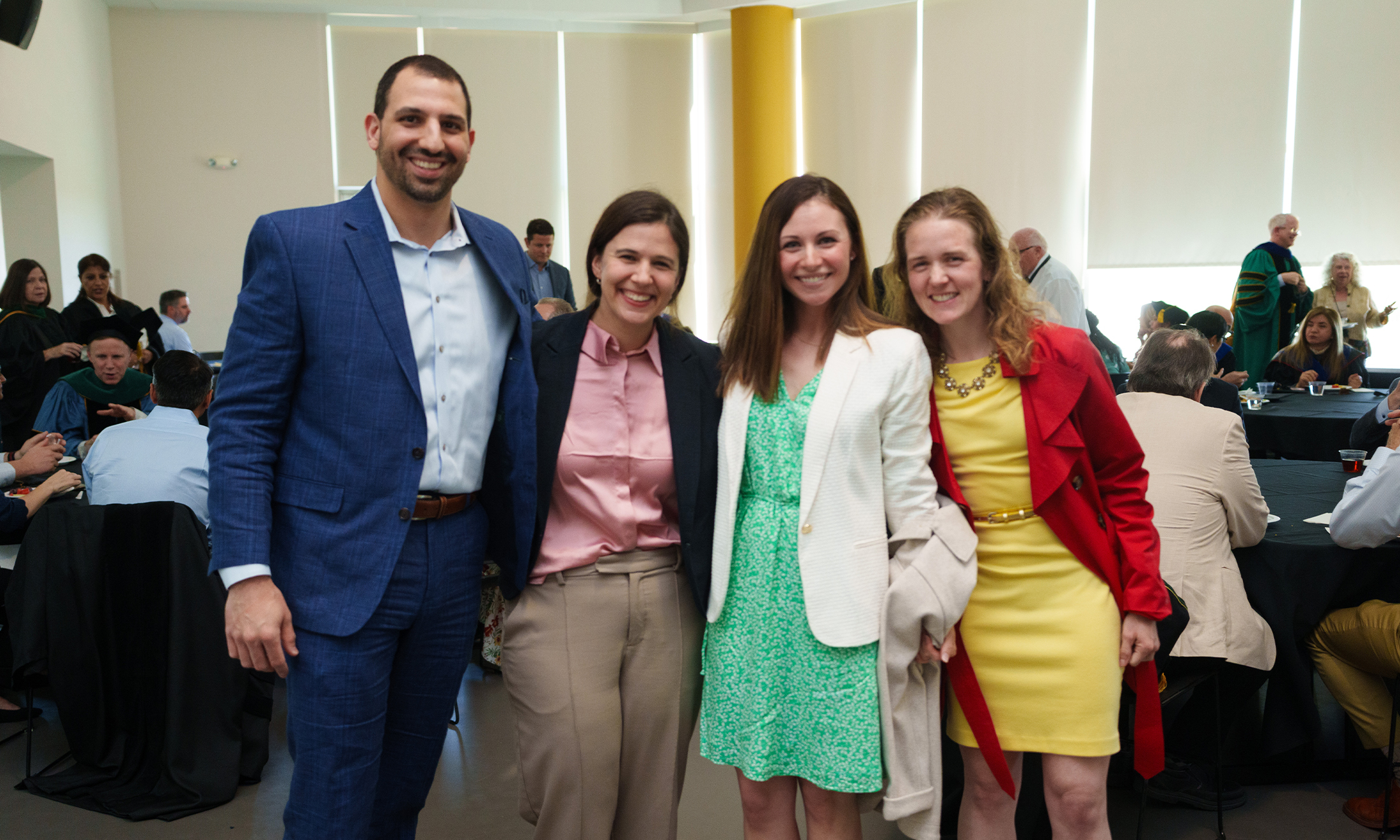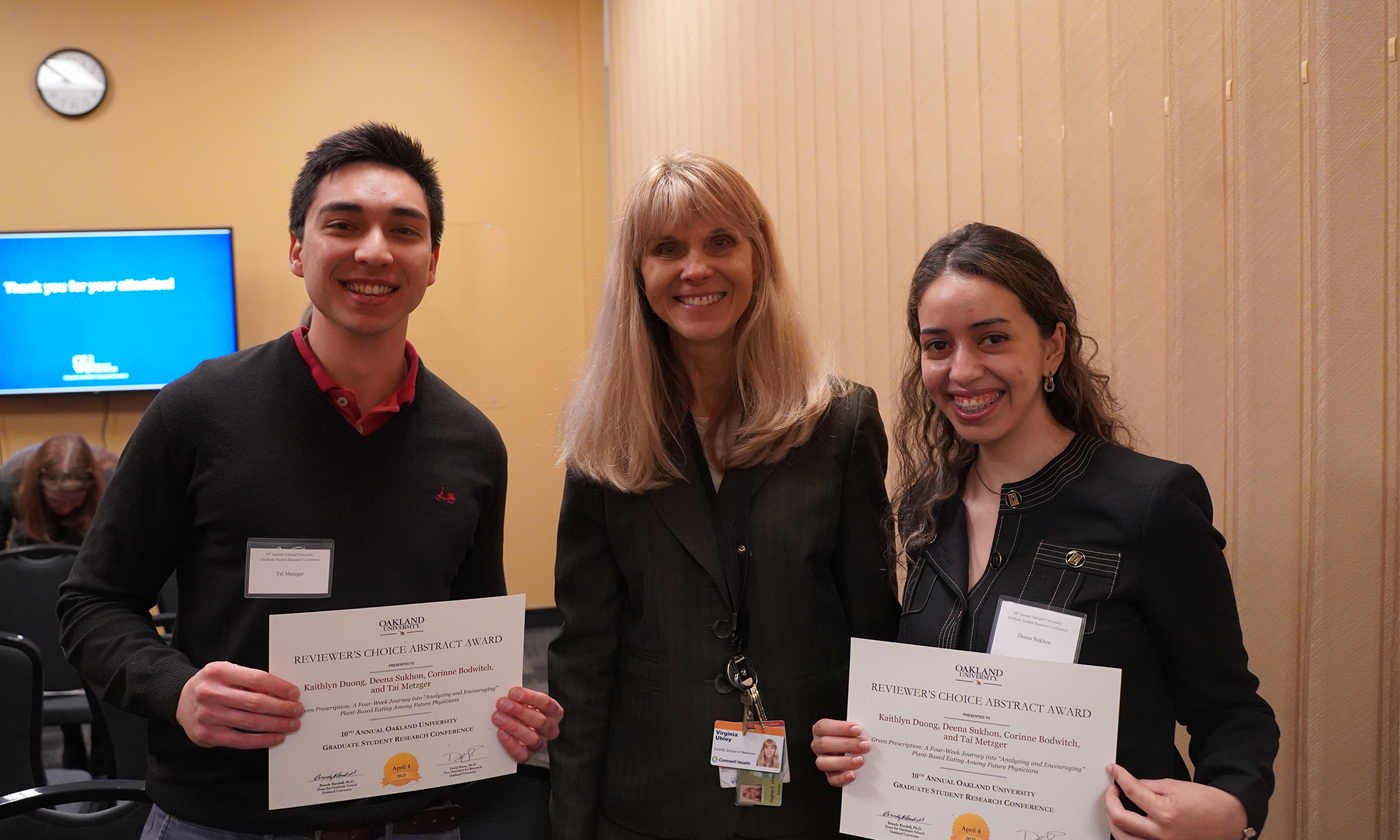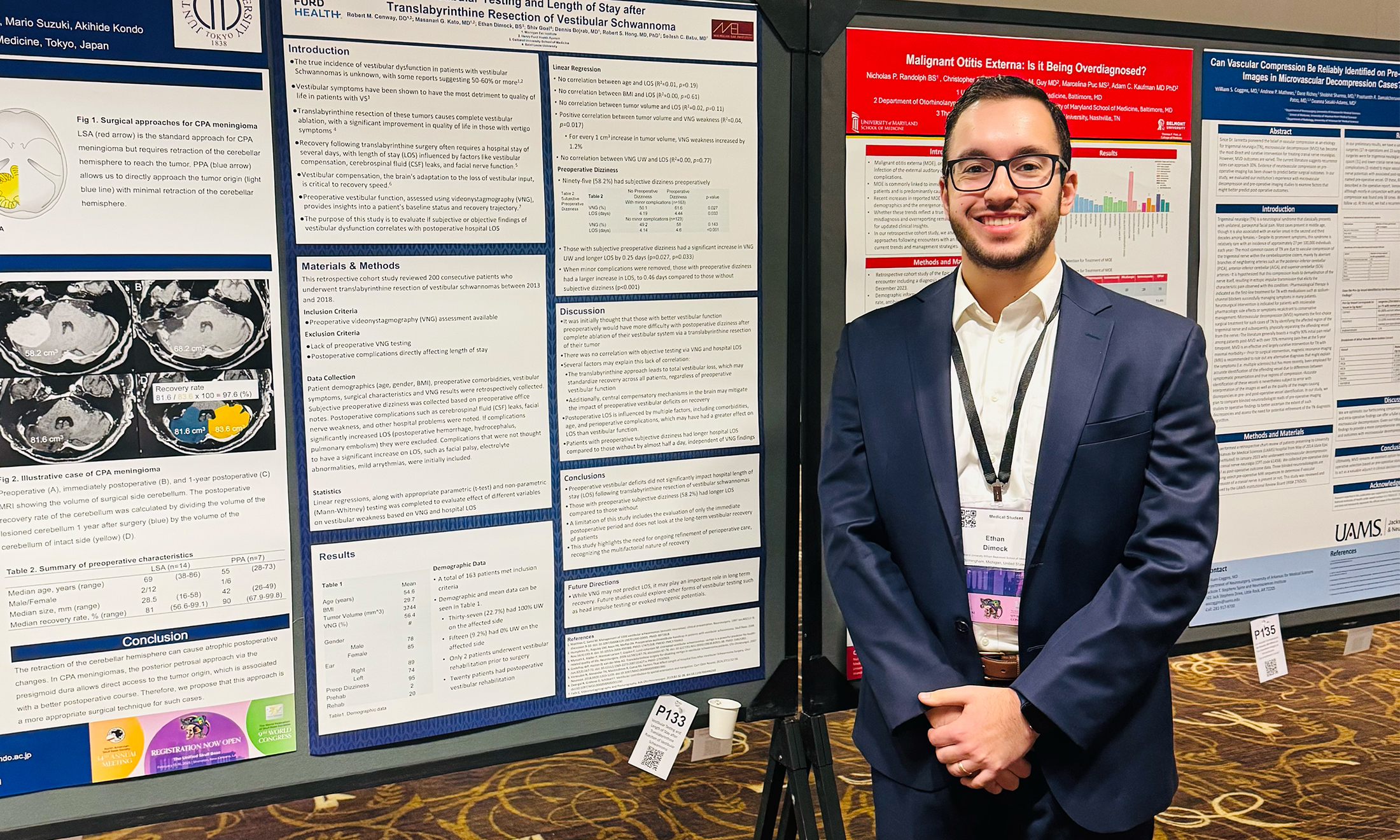Influence the influencers
Study led by OUWB students finds TikTok medical videos can be improved
Content creators who disseminate medical information via TikTok have opportunities to produce better videos, according to a recent study led by two OUWB medical students.
“Current Public Trends in Discussion of Dry Eyes: A Cross-Sectional Analysis of Popular Content on TikTok” was published in Cureus.
The paper assessed the quality of medical information provided in videos shared on TikTok and containing the hashtag #DryEye.
The goal was to use a specific medical condition like dry eye disease to closely examine the quality of content with medical information, says lead author Shahrukh Naseer, rising M3.
“There is so much more to the platform than just people posting funny videos,” he says. “There are a lot of professionals who are out there spreading information…some of it can be good, but a lot of it can be bad.”
“That led us to figure out how we can delineate between two.”
Further, co-author Sazid Hasan, rising M3, says it’s becoming increasingly common for patients to tell their doctors that they picked up health-related information via the platform.
“TikTok is starting to become a big resource and source of information,” he says.
The other two authors on the study were Julie Bhuiyan, a research assistant from Harvard University; and Anuradha Prasad, M.D., an ophthalmologist with Beaumont Health.
“Social media has the potential to be a powerful tool for medical education, and we recommend that physicians and healthcare practitioners provide high-quality information to advance healthcare literacy,” states the study.
“Physicians can improve the quality of information shared in their videos through various methods, including the use of rich supplementary material, citation of relevant sources, and thorough evaluation of the risks and necessity of proposed treatments.”
‘A nice standard deviation curve’
The study consisted of a cross-sectional analysis of TikTok videos from December 2021, using the search term “#DryEye.” The 150 most popular videos related to the condition were chosen based on inclusion criteria — a minimum of 1,000 views and in English. About 50 were excluded from the study for not meeting inclusion criteria.
The remaining 100 videos were sorted by influencer-type (nano, micro, mid-tier, and macro) and length. They were also assigned to one of three groups: without supplementary visuals; with minimal supplementary visuals; and rich with supplementary visuals, such as moving and/or multiple images.
Additionally, videos were assessed via DISCERN, a tool used to appraise consumer health information. For the study, the DISCERN score was based on answers to 15 key questions, such as: Are the aims (of the video) clear?; Is (the video) balanced and unbiased?; and Is (the video) relevant? Each question was scored on a one to five scale.
Scoring the videos required watching each “at least three or four times,” says Naseer, meaning it took a long time to evaluate all of the videos. But evaluating as many videos as possible was important, he adds.
“It’s important to get as much of a broad picture as you can…it’s all about getting a big sample size,” he says.
“Based on prior studies, we thought about 100 videos would give us a nice standard deviation curve,” says Hasan.
‘Great quality of communication’
The researchers identified four types of content creators: licensed physicians; non-physician medical providers; non-medical individuals; and private companies.
After thoroughly analyzing each video, study findings included:
— TikTok is a powerful tool for patient education regarding dry eye disease. (The videos in the study amassed about 100 million views and more than six million likes, along with tens of thousands of comments and shares.)
— Most content creators (80%) were female.
— Non-physician medical providers contributed the most videos on the topic.
— DISCERN scores were “significantly lower” for non-medical individuals.
— DISCERN scores were “significantly higher” for videos regarding treatment information compared to other video types.
— Longer videos of 30 to 45 seconds had significantly higher DISCERN scores; videos no longer than 15 seconds had the lowest scores.
— Physicians received greater number of views and higher DISCERN scores.
“That really speaks to the level of training (to become a physician),” says Naseer. “You’ve got the years of med school, followed by years of residency training…it really makes you such an expert in the field that you become qualified to share this information and have the resources to back it up.”
Another big finding was that the use of multiple and/or moving images in videos led to “significantly higher DISCERN scores when compared to other videos of less-rich visual quality.”
“Greater quality of communication can foster increased quality of shared health information, and we encourage content creators to utilize rich supplementary visuals, such as multiple or moving images, to support the information they present,” states the study.
Hasan says his goal in publishing the paper is to assist content creators.
“It’s all about informing the general public and saying ‘Hey, if you’re trying to make effective and educational videos, these things we highlighted work,’” he said.
Naseer says he agrees and hopes the paper can have influence over the influencers.
“The biggest thing I hope people get out of it is that (they) have the ability to make higher quality, well-researched, and well-informed videos,” he says. “By doing so, you’re signifying that having the correct information is important and you’re part of the solution.”

 July 06, 2022
July 06, 2022
 By Andrew Dietderich
By Andrew Dietderich



